Fibromyalgia is a disorder that causes chronic musculoskeletal pain as well as insomnia, depression, and other cognitive issues.
While it’s not life-threatening, it can have a debilitating impact — both physically and mentally.
Currently, there is no known cure, and available conventional treatment options focus primarily on pain management. However, CBD is becoming increasingly popular among fibromyalgia sufferers.
In this article, we explore the ways in which CBD may help treat the symptoms of this incapacitating condition.
Does CBD Help with Fibromyalgia?
Evidence suggests that conditions such as depression, stress, and anxiety can contribute significantly to the development of fibromyalgia.
The hypothalamic-pituitary-adrenal (HPA) axis, which controls the body’s physiological reaction to stress, becomes dysfunctional, making it increasingly difficult to cope with and manage stressful situations, as well as causing widespread chronic pain.
CBD may be able to relieve these conditions due to its ability to interact with the endocannabinoid system (ECS).
The function of the ECS is to maintain physical and cognitive homeostasis (balance) by sending endocannabinoids to wherever they’re needed in the body.
CBD leverages the ECS to provide analgesic and anti-inflammatory effects, which help to ease the symptoms of fibromyalgia.
CBD may help with fibromyalgia by:
- Reducing pain
- Reducing inflammation
- Promoting cognitive homeostasis (thereby relieving symptoms of stress, anxiety, and depression)
- Regulating sleep (thereby helping to treat insomnia and fatigue)
CBD & Sleep Regulation
CBD also activates the serotonin receptors (5HT1A and 5HT2A) — which help reduce stress and anxiety.
Various studies show that CBD works to manage anxiety and depression, as well as other neurological issues. It does this by increasing astrocyte activity — which regulates synaptic activity and inflammation. This reduces underlying inflammation in the brain, which has been linked to conditions such as depression.
CBD may be effective in regulating the quality and quantity of sleep thanks to its calming properties. Additionally, the ability to reduce common causes of insomnia, such as anxiety, pain, or chronic stress also goes a long way in promoting a better night of sleep.
CBD For Fibromyalgia: What the Research Says?
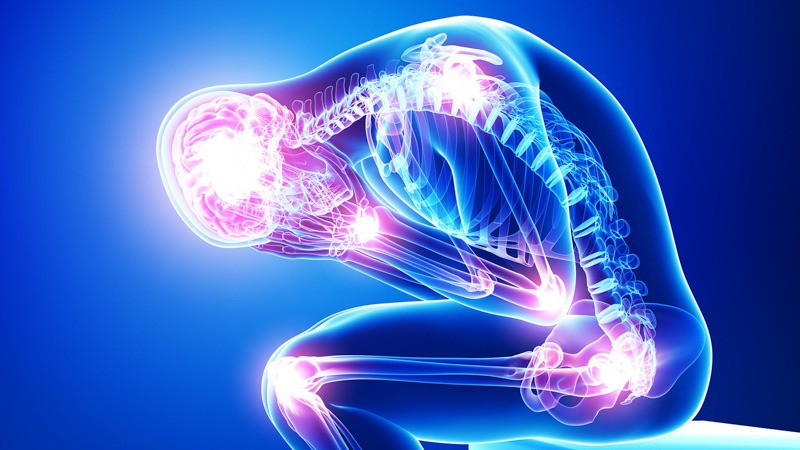 Unfortunately, research on the effects of CBD on fibromyalgia is limited. There are currently no published studies on fibromyalgia that look at the effects of CBD on its own. However, there have been a few clinical studies looking at cannabis as a whole that have returned promising results.
Unfortunately, research on the effects of CBD on fibromyalgia is limited. There are currently no published studies on fibromyalgia that look at the effects of CBD on its own. However, there have been a few clinical studies looking at cannabis as a whole that have returned promising results.
Study #1: Cannabinoids & Fibromyalgia
In 2009, one study (which mentions fibromyalgia in particular) looked at multiple cannabinoids and found that CBD, in particular, can relieve pain. Specifically, it showed that CBD relieved neuropathic pain most effectively when used as an adjunct to other pain medications.
Study #2: Comparing Cannabis Users vs. Non-Users
A 2001 study of 56 people (mainly women) with fibromyalgia split participants into two groups of 28. One group consisted of cannabis users (with the frequency of use and amount consumed varying), while the other group consisted of non-cannabis users.
Two hours after consuming cannabis, the first group reported experiencing benefits such as an increase in drowsiness and reduced pain and stiffness. They also scored higher in mental health assessments than the non-cannabis users.
Study #3: Women With Fibromyalgia
More recently, in a 2019 Dutch study, 20 women with fibromyalgia were given different types of cannabis (four in total over the course of the study):
- 100 mg of low-CBD, high-THC cannabis (Bedrocan)
- 200 mg of high-CBD, high-THC cannabis (Bediol)
- 200 mg of high-CBD, low-THC cannabis (Bedrolite)
- A placebo containing no CBD or THC
The high-CBD, high-THC cannabis (Bediol) caused a 30% reduction of spontaneous pain in almost all of the participants (18 out of 20).
However, it’s worth pointing out that participants responded better when THC levels were similar to CBD levels, suggesting that the entourage effect is crucial when using CBD to treat fibromyalgia.
Study #4: Long-Term Study
In another 2019 study— this time, in Israel — 367 people with fibromyalgia (of which 82% were women) were observed by researchers over a period of six months.
All the participants consumed medical cannabis, receiving medical guidance beforehand regarding the 14 cannabis strains available, dosages, and consumption methods.
A slow dose was given to start with (the median being 670 mg per day), which was gradually increased over the course of the study (with a median dose of 1,000 mg per day by the end). After six months, only 7.9% of respondents reported high levels of pain compared with the 52.5% at the start of the study.
However, it’s worth noting that the use of so many different strains made it hard to compare the effects of CBD-rich and THC-rich strains.
How to Use CBD Oil for Fibromyalgia?
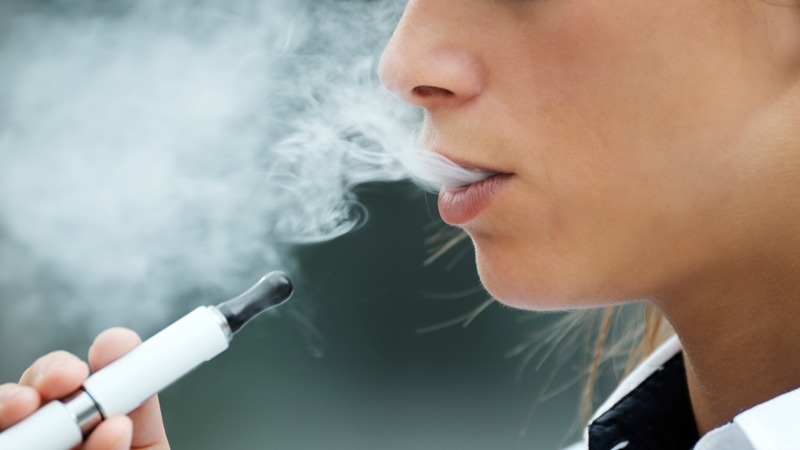 There are multiple ways of consuming CBD — all of which have their pros and cons. We’ll run through them here.
There are multiple ways of consuming CBD — all of which have their pros and cons. We’ll run through them here.
1. Sublingual Absorption (Under Your Tongue)
CBD oil can be dropped under the tongue and absorbed by the capillaries located there. This means it goes straight into the bloodstream, bypassing the digestive system. Consequently, effects can be felt quickly — making it an ideal consumption method for spontaneous pain or sudden feelings of stress and anxiety.
2. Inhalation (Vaping)
Much like taking CBD oil sublingually, vaping allows the cannabinoid to be immediately absorbed into the bloodstream through the capillaries in the cheeks and the lungs. This makes it another great option for sudden bursts of pain or stress.
3. Topical Absorption
CBD oil can be either applied directly onto the skin or infused into creams, balms, lotions, and salves — often mixed with other soothing ingredients for greater effect. The CBD reacts with the CB receptors located in the skin, providing quick, targeted, localized pain relief as and when needed.
As topical CBD application means very little enters the bloodstream, it is often best combined with other forms of CBD consumption to experience the greatest effects.
3. Oral Absorption
CBD oil can be swallowed orally (either directly as oil or in capsule form) or infused into a number of foods, such as gummies, brownies, honey, or butter.
As the CBD has to go through the body’s digestive system before entering the bloodstream, it takes longer to feel the effects compared with consuming it sublingually or vaping. However, the effects are longer-lasting — up to six hours.
How Much CBD Oil Should I Take for Fibromyalgia?
The symptoms of fibromyalgia — and their severity — vary from person to person.
As such, so will the required dose of CBD to provide an effective treatment.
As always, it’s best to adopt the ‘start low and go slow’ approach. Start with a low dose and gradually increase it until you experience the desired effects — then you know you’ve found the optimum dosage for you as an individual.
Don’t worry, it’s nearly impossible to overdose on CBD — but you still want to avoid experiencing any unwanted (albeit mild) side-effects, such as drowsiness, dry mouth, or nausea.
It’s worth bearing in mind that most people who suffer from fibromyalgia require relatively high doses of CBD to relieve their often-chronic symptoms — so it’s best to be prepared for that.
Top Choice of CBD Products for Fibromyalgia
1. Royal CBD Oil (Best Overall)
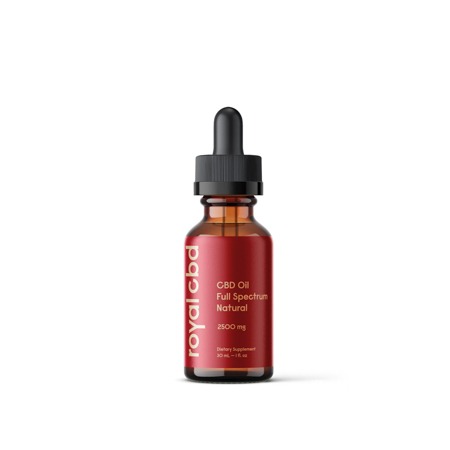 Royal CBD is one of the premier suppliers of CBD oil in the US. Their 2500 mg full-spectrum option is one of the strongest products available on the market.
Royal CBD is one of the premier suppliers of CBD oil in the US. Their 2500 mg full-spectrum option is one of the strongest products available on the market.
These oils are rich in CBD as well as a variety of other useful anti-inflammatory and analgesic cannabinoids such as cannabigerol (CBG) and cannabichromene (CBC). Other ingredients, such as lavandin, myrcene, bisabolol, and linalool, also provide support to the CBD for managing pain and inflammation associated with fibromyalgia.
If you’re looking for a high-dose to help manage fibromyalgia symptoms, this may be a good bet. As it’s full-spectrum, you’ll also be able to take advantage of the entourage effect. This is when all the cannabinoids found in the cannabis plant work in synergy to provide maximum health benefits.
2. Gold Bee CBD Oil (Best Organic Formula)
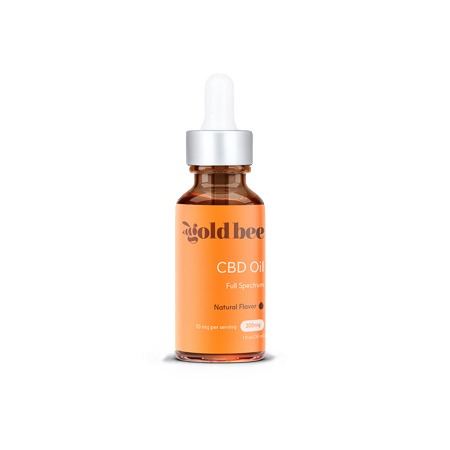 Gold Bee also produces full-spectrum CBD oils, meaning the effect will be optimized.
Gold Bee also produces full-spectrum CBD oils, meaning the effect will be optimized.
Third-party lab tests — the results of which are clearly displayed for consumers by all reputable CBD companies — have shown that Gold Bee’s oils have a particularly high concentration of the terpenes linalool and myrcene.
Both of these have been shown to have anti-inflammatory and analgesic properties.
Moreover, Gold Bee CBD oil is high in CBC, CBN, and CBG — cannabinoids that also have anti-inflammatory and analgesic properties.
3. Hemp Bombs CBD Oil (THC-Free)
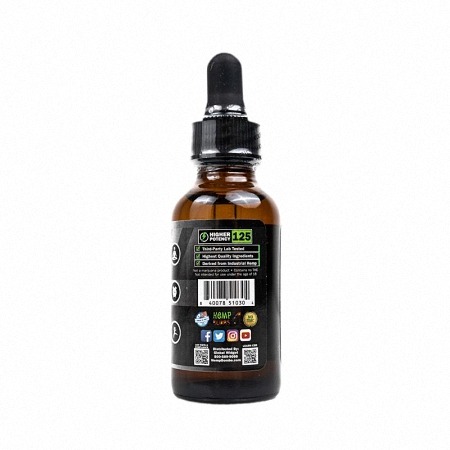 Unlike Gold Bee, Hemp Bombs CBD Oil contains CBD isolate, so there’s no THC whatsoever. Although studies suggest the entourage effect is extremely beneficial when treating fibromyalgia, some people cannot or would rather not consume any THC (the psychoactive compound in cannabis). If that sounds like you, the Hemp Bombs CBD Oil is the best option.
Unlike Gold Bee, Hemp Bombs CBD Oil contains CBD isolate, so there’s no THC whatsoever. Although studies suggest the entourage effect is extremely beneficial when treating fibromyalgia, some people cannot or would rather not consume any THC (the psychoactive compound in cannabis). If that sounds like you, the Hemp Bombs CBD Oil is the best option.
There’s a range of different potencies to choose from, starting at 125 mg and going all the way up to 5000 mg. This means there’s something to suit all levels of fibromyalgia symptoms, including the most severe. It also makes it possible to stay with the same brand if your symptoms worsen and you need to increase the strength.
Last but certainly not least, all Hemp Bombs CBD oils come with third-party lab results, so you know that the product is free from contaminants and impurities. There’s also six flavors available: Acai Berry, Chocolate Mint, Orange Creamsicle, Peppermint, Watermelon, and Natural Hemp.
Final Thoughts: Taking CBD for Fibromyalgia
Unfortunately, there is no cure for fibromyalgia, which can be both physically and socially debilitating.
While CBD will not be an overnight solution, the available scientific evidence does suggest it could be a promising alternative or addition to conventional pain medications.
This is mainly due to its analgesic and anti-inflammatory properties that help with chronic pain management. Additionally, CBD’s ability to promote cognitive homeostasis helps to alleviate symptoms of stress, anxiety, depression, and insomnia.
As always, it’s best to consult a medical professional before taking any new supplement as a treatment for a medical condition. This is especially true if you’re already taking prescription medication.
References
- Rifbjerg-Madsen, S., Christensen, A. W., Christensen, R., Hetland, M. L., Bliddal, H., Kristensen, L. E., . . . Amris, K. (2017). Pain and pain mechanisms in patients with inflammatory arthritis: A Danish nationwide cross-sectional DANBIO registry survey. PLoS One, 12(7), e0180014. doi:10.1371/journal.pone.0180014
- Nagarkatti, P., Pandey, R., Rieder, S. A., Hegde, V. L., & Nagarkatti, M. (2009). Cannabinoids as novel anti-inflammatory drugs. Future medicinal chemistry, 1(7), 1333-1349.
- Tsuji, F., Murai, M., Oki, K., Inoue, H., Sasano, M., Tanaka, H., … & Aono, H. (2010). Effects of SA13353, a transient receptor potential vanilloid 1 agonist, on leukocyte infiltration in lipopolysaccharide-induced acute lung injury and ovalbumin-induced allergic airway inflammation. Journal of pharmacological sciences, 112(4), 487-490.
- Ruhaak, L. R., Felth, J., Karlsson, P. C., Rafter, J. J., Verpoorte, R., & Bohlin, L. (2011). Evaluation of the cyclooxygenase inhibiting effects of six major cannabinoids isolated from Cannabis sativa. Biological and Pharmaceutical Bulletin, 34(5), 774-778.
- Vuolo, F., Petronilho, F., Sonai, B., Ritter, C., Hallak, J. E., Zuardi, A. W., … & Dal-Pizzol, F. (2015). Evaluation of serum cytokines levels and the role of cannabidiol treatment in an animal model of asthma. Mediators of inflammation, 2015.
- Kaplan, B. L., Springs, A. E., & Kaminski, N. E. (2008). The profile of immune modulation by cannabidiol (CBD) involves deregulation of nuclear factor of activated T cells (NFAT). Biochemical pharmacology, 76(6), 726-737.
- Jaseena Elikottil, MBBS, Pankaj Gupta, MD, and Kalpna Gupta, PhD. The Analgesic Potential of Cannabinoids. J Opioid Manag. 2009 Nov-Dec; 5(6): 341–357.
- Jimena Fiz, Marta Durán, Dolors Capellà, Jordi Carbonell, Magí Farré. Cannabis Use in Patients with Fibromyalgia: Effect on Symptoms Relief and Health-Related Quality of Life. https://doi.org/10.1371/journal.pone.0018440.
- van de Donk, Tinea; Niesters, Mariekea; Kowal, Mikael A.b; Olofsen, Erika; Dahan, Alberta,*; van Velzen, Monique, An experimental randomized study on the analgesic effects of pharmaceutical-grade cannabis in chronic pain patients with fibromyalgia. April 2019 – Volume 160 – Issue 4 – p 860-869.
- Iftach Sagy, Lihi Bar-Lev Schleider, Mahmoud Abu-Shakra, and Victor Novack. Safety and Efficacy of Medical Cannabis in Fibromyalgia. J Clin Med. 2019 Jun; 8(6): 807.

